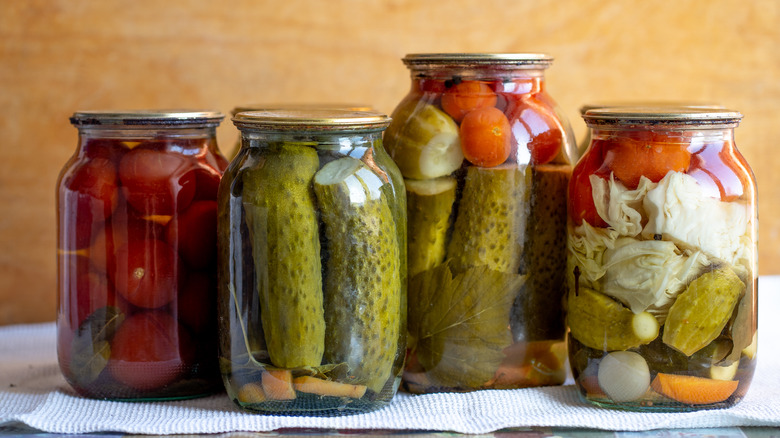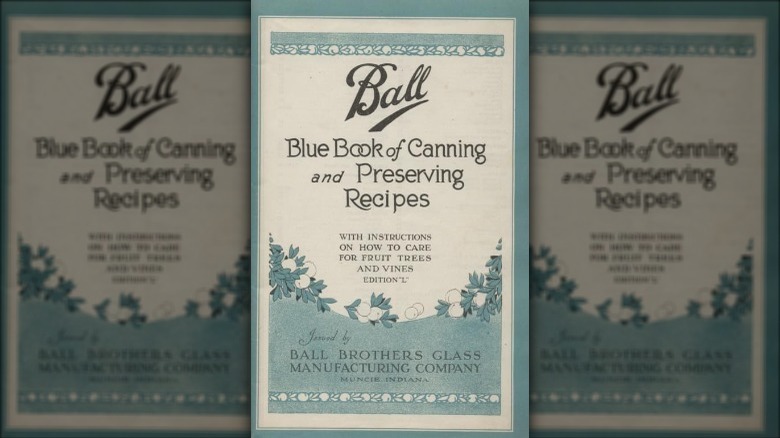Why The Ball Blue Book Is Controversial In The Canned Food World
We may receive a commission on purchases made from links.
If you're a seasoned canner, the words "Ball Blue Book of Canning and Preserving Recipes" may cause you to groan instinctively out of frustration. But if you're new to this homesteading hobby and want to know why this canning manual is so controversial, get ready. Because the story of one of the U.S.'s most infamous canning guides' fall from grace is filled with discourse and canner community outrage.
Our tale began in the 1880s when brothers Frank C. and Edmund B. Ball started a glass jar factory (via Ball Corporation). Little did they know that a decade later, their jars would become one of the most popular in the U.S., and their name would become synonymous with canning. But when the Ball brothers discovered they had enormous pull in the canning community, they knew what they would do next: make a book on canning. And so, the "Ball Blue Book of Canning" was published.
This canning guide was more than just a cash grab; it was a book of genuinely informed (for the time) recipes made with Americans eager to learn about this homesteading tradition in mind. And, as reported by Healthy Canning, the book was such a success that, until recently, it was a hallmark for canners. Now the canning community can't decide whether it's still worth using (per The Counter). Here's why some canners are throwing out the iconic canning manual.
Some canning authorities no longer trust the Ball Blue Book's recipes
In 2021, The Counter reported that Iowa State University left the canning community in shambles when it revoked its endorsement for the "Ball Blue Book of Canning and Preserving Recipes." The reason behind this shell-shocking revelation was simple. The Counter stated that, much like your grandma's old canning recipes, ISU found that the "Ball Blue Book's" canning instructions were reportedly not up to par with today's canning standards. So, yes, although Healthy Canning notes that the Ball Jar Company updates the book's recipes fairly regularly by publishing new editions, ISU stated that there are even problems with its revised guidelines. The university noted that many "Ball Blue Book" canning guides do not have proper testing data or exact measurements, and that the book's recipes are riddled with inaccurate and hard-to-read explanations.
However, despite the concerns ISU has raised about the iconic canning book, it is still touted by outlets like The Spruce Eats as one of the best beginner-friendly canning manuals. And the "Blue Book" can still be bought at Amazon and Barnes & Noble. So it seems both the canning community and the authorities for canning are deeply divided on where the "Blue Book" stands in the world of food preservation.

